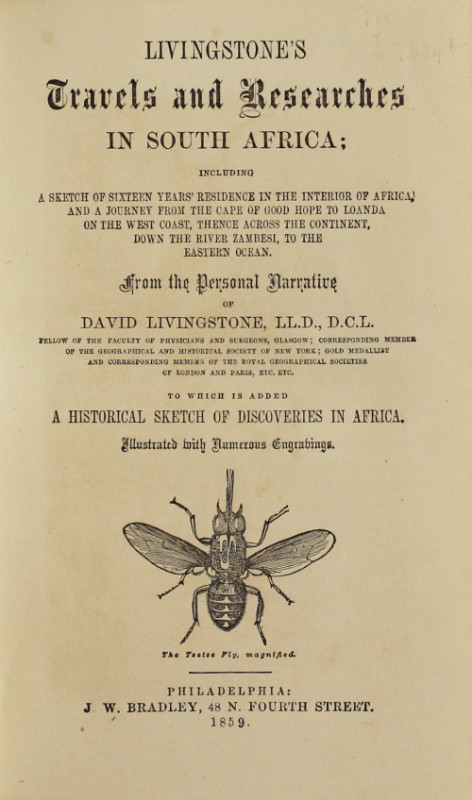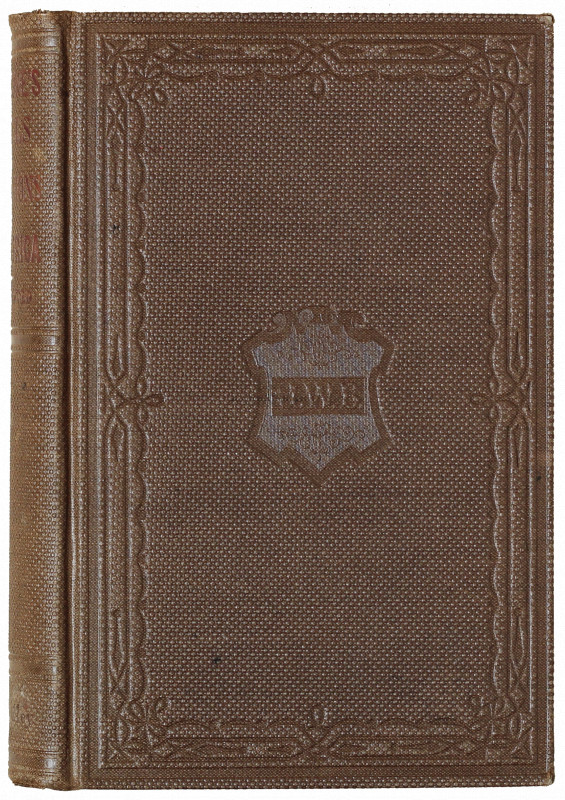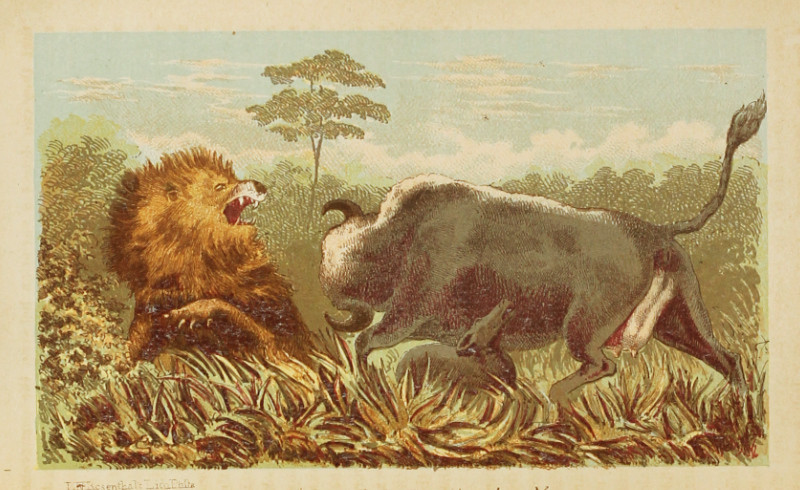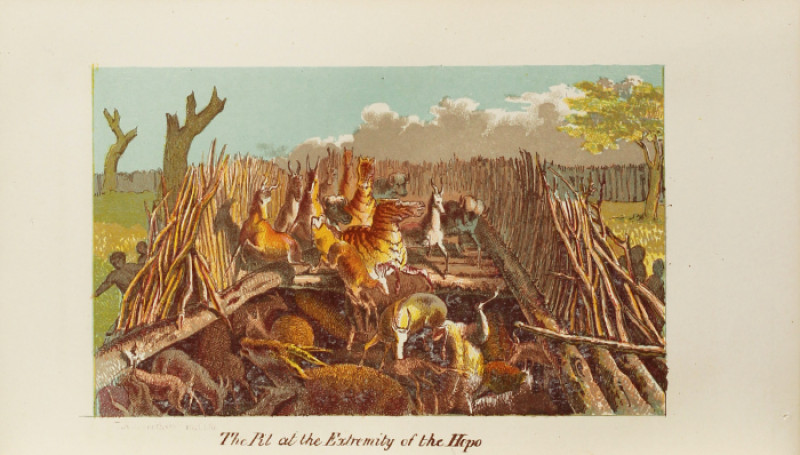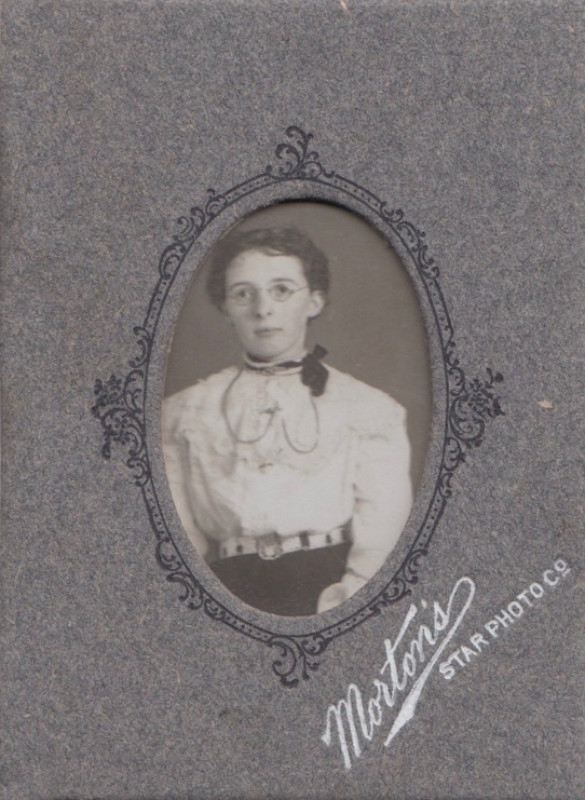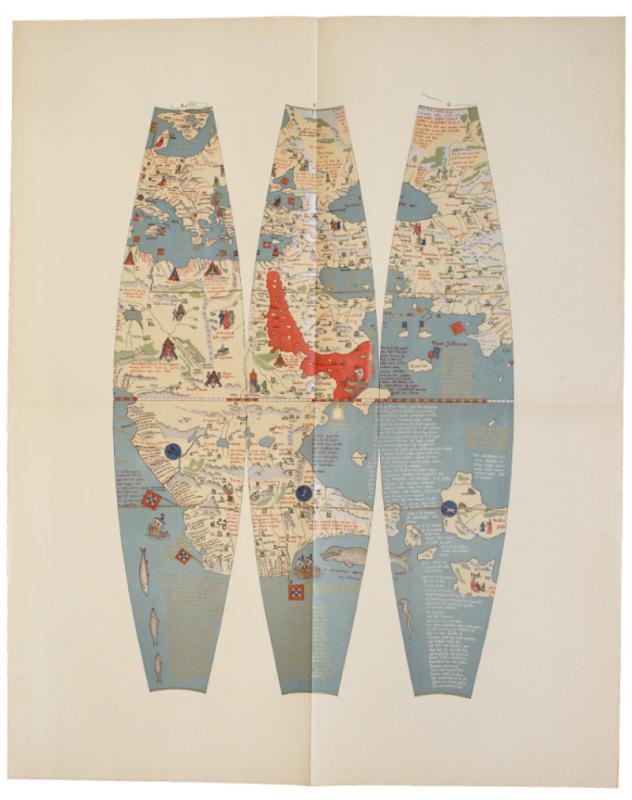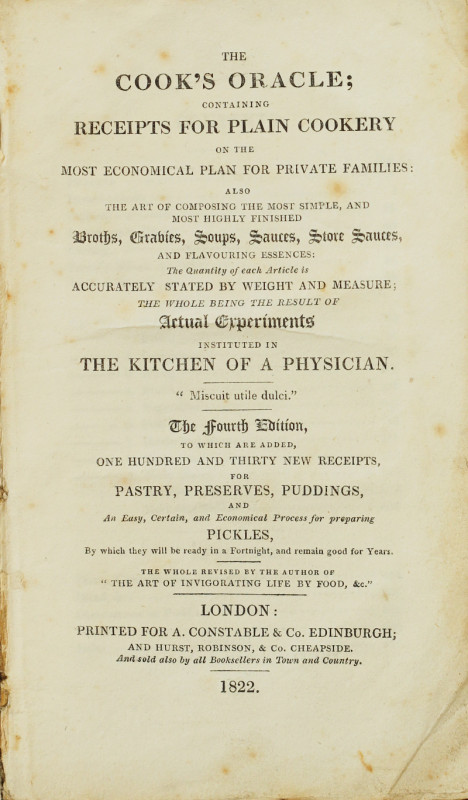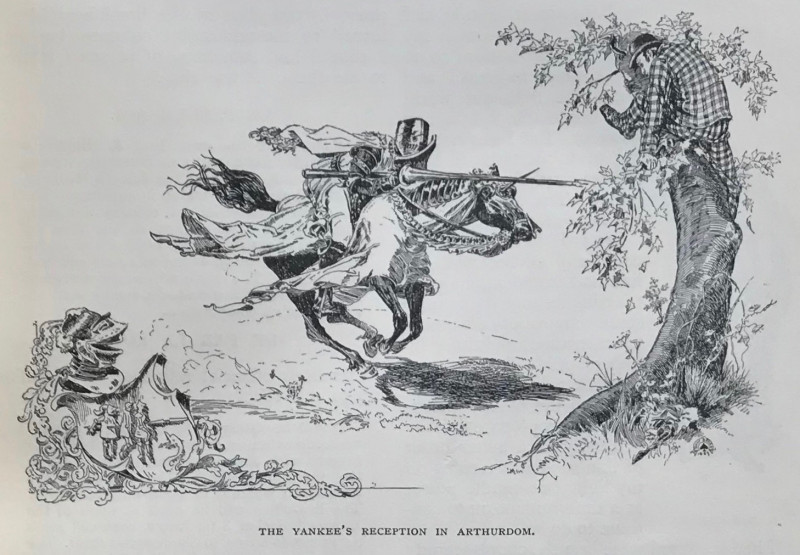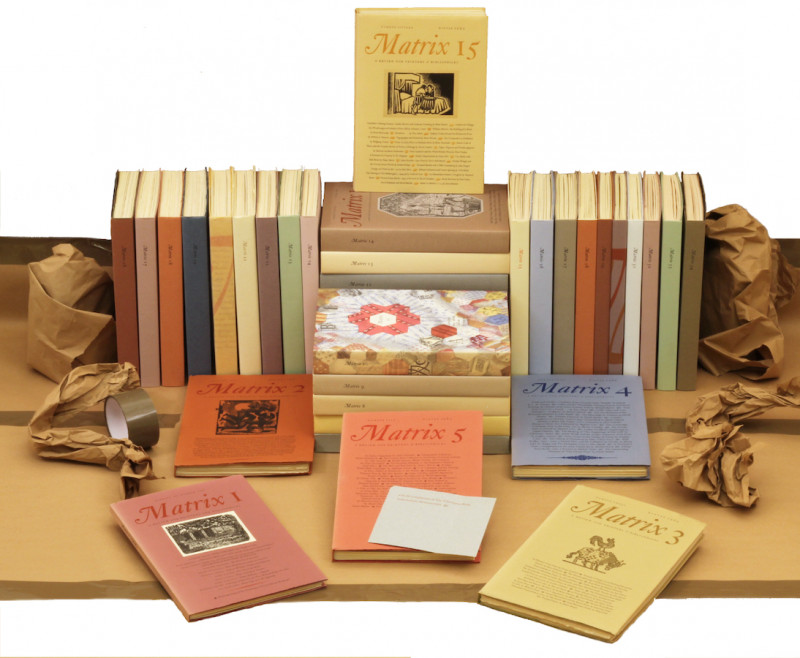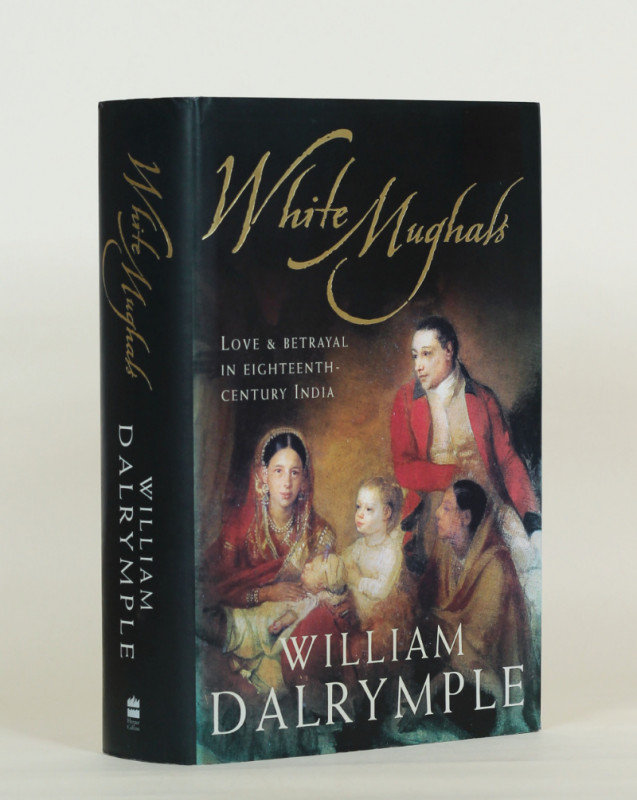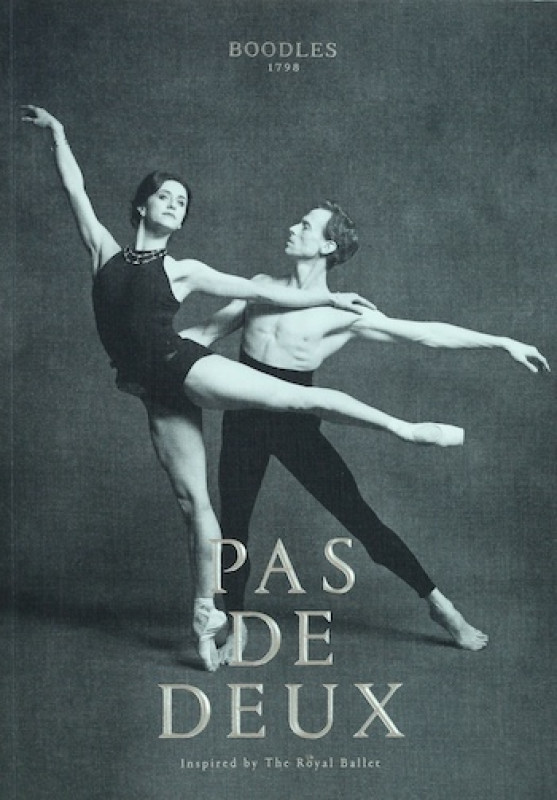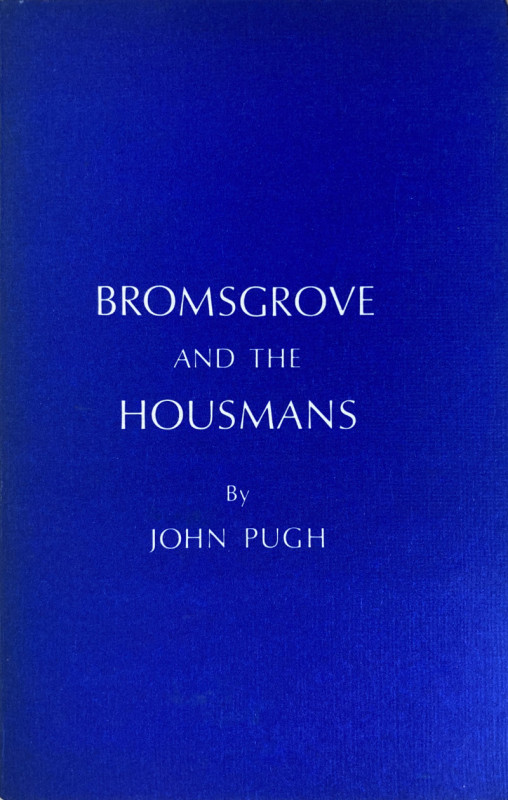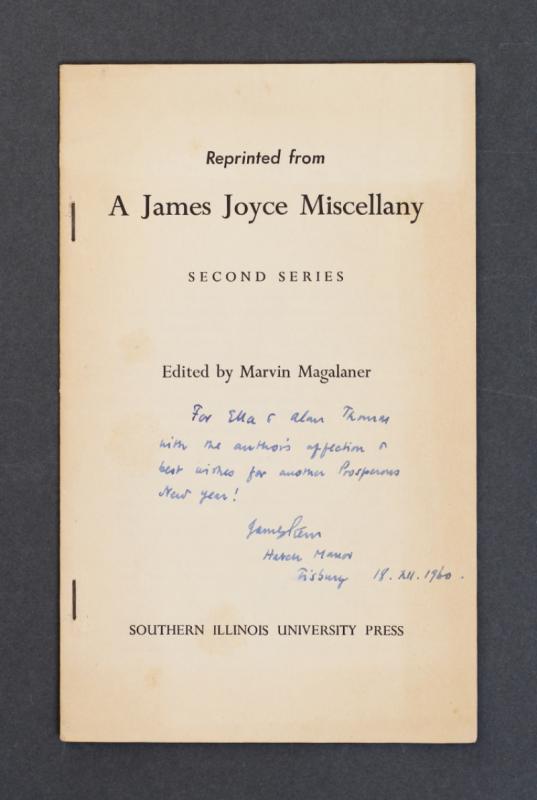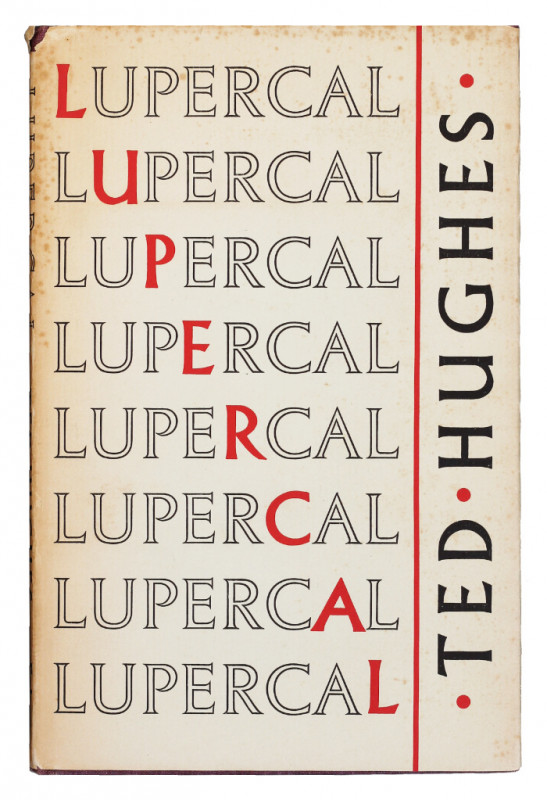Livingstone’s Travels and Researches in South Africa... [from the library of Quentin Keynes]
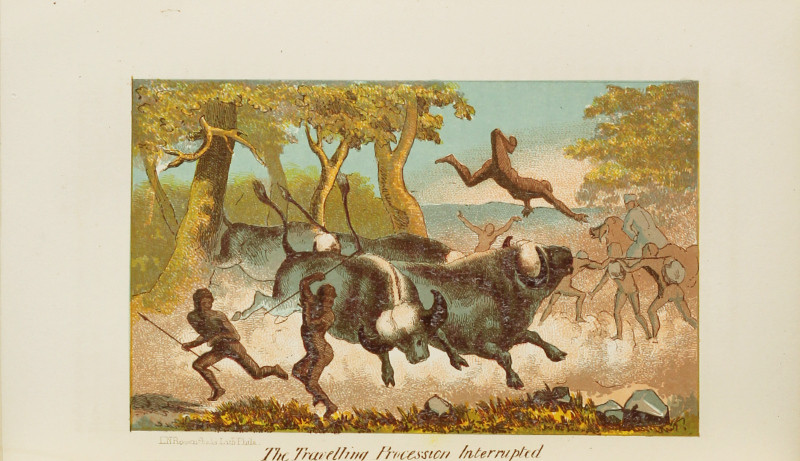





Book Description
THE FIRST PUBLICATION OF ROSENTHAL’S CHROMOLITHOGRAPHIC ILLUSTRATIONS TO LIVINGSTONE’S TRAVELS AND RESEARCHES IN SOUTH AFRICA, IN THE ORIGINAL CLOTH
[full title]: Livingstone’s Travels and Researches in South Africa; Including A Sketch of Sixteen Years’ Residence in the Interior of Africa and a Journey from the Cape of Good Hope to Loanda on the West Coast, thence across the Continent, down the River Zambesi, to the Eastern Ocean. From the Personal Narrative of David Livingstone ... To which is Added a Biographical Sketch of Discoveries in Africa.
Octavo (194 x 125mm), pp. [2 (blank l.)], 1-2 (‘Notices of the Press’), [i]-[ii] (title, copyright statement and imprint), v-xiv (‘Preface of the American Publisher’, contents), 3-22, 25-30, 33-36, 39-76, 79-80, 83-194, 197-200, 203-314, 317-352, 355-376, 379-442 (text), 3, 8-15, 17, 19-22 (publisher’s advertisements). Colour-printed lithographic frontispiece retaining tissue guard and 11 colour-printed lithographic plates, all by L.N. Rosenthal, wood-engraved title-vignette and wood-engraved illustrations in the text. (A few light marks, a few ll. with short marginal tears causing occasional small losses.) Original pebble-grained brown cloth, boards blocked in blind with elaborate borders enclosing central escutcheon with publisher’s monogram, spine lettered in gilt and ruled in blind, lemon-yellow endpapers. (A few light marks, extremities lightly rubbed, affecting gilt on spine, small dent on lower board.) A very good copy in the original cloth.
Provenance: early pencil correction on p. 5 – early inkstamp on p. v with number ‘36876’ – Quentin George Keynes FRGS (1921-2003).
[full title]: Livingstone’s Travels and Researches in South Africa; Including A Sketch of Sixteen Years’ Residence in the Interior of Africa and a Journey from the Cape of Good Hope to Loanda on the West Coast, thence across the Continent, down the River Zambesi, to the Eastern Ocean. From the Personal Narrative of David Livingstone ... To which is Added a Biographical Sketch of Discoveries in Africa.
Octavo (194 x 125mm), pp. [2 (blank l.)], 1-2 (‘Notices of the Press’), [i]-[ii] (title, copyright statement and imprint), v-xiv (‘Preface of the American Publisher’, contents), 3-22, 25-30, 33-36, 39-76, 79-80, 83-194, 197-200, 203-314, 317-352, 355-376, 379-442 (text), 3, 8-15, 17, 19-22 (publisher’s advertisements). Colour-printed lithographic frontispiece retaining tissue guard and 11 colour-printed lithographic plates, all by L.N. Rosenthal, wood-engraved title-vignette and wood-engraved illustrations in the text. (A few light marks, a few ll. with short marginal tears causing occasional small losses.) Original pebble-grained brown cloth, boards blocked in blind with elaborate borders enclosing central escutcheon with publisher’s monogram, spine lettered in gilt and ruled in blind, lemon-yellow endpapers. (A few light marks, extremities lightly rubbed, affecting gilt on spine, small dent on lower board.) A very good copy in the original cloth.
Provenance: early pencil correction on p. 5 – early inkstamp on p. v with number ‘36876’ – Quentin George Keynes FRGS (1921-2003).
Dealer Notes
[?]Third Bradley edition and the first illustrated with Rosenthal’s chromolithographs. ‘Livingstone’s services to African geography during thirty years are almost unequalled; he covered about a third of the continent from the Cape to the Equator and from the Atlantic to the Indian Ocean. He made three great expeditions; in 1853-6 [...], 1858-64 and 1865-1873, of which the first and the third are the most important. During these years he explored vast regions of central Africa, many of which had never been seen by white men before. He first discovered the Zambesi River at Secheke and followed it northwards, eventually reaching the west coast of Africa at Luanda, Angola, and the east coast at Quelimane, Mozambique, In 1855 he discovered the great falls of the Zambesi and named them the Victoria Falls. He explored the Zambesi, Shire and Ruyuma rivers and found the salt lake Chilwa and Lake Nyasa [...]. The geographical results of his journeys were of supreme importance, and made it possible to fill in great stretches of the maps of Central Africa which hitherto had been blank’ (J. Carter and P.H. Muir, Printing and the Mind of Man (London and New York, 1967), no. 341).
Livingstone’s Missionary Travels and Researches in South Africa, which was first published at London by John Murray in 1857, included an account of the first of his ‘three great expeditions’ and brought to the attention of his readers the extent of the slave trade in Central and Eastern Africa, thus countering the popular misconception that the slave trade was declining in Africa. Missionary Travels and Researches in South Africa was also scientifically important, notably for providing an accurate account of the tsetse fly (Glossina morsitans) and the effect of its bite on cattle. It was believed that the tsetse fly was harmless to humans (which it may have been at that time), and Livingstone comments that ‘[a] most remarkable feature in the bite of the tsetse is its perfect harmlessness in man and wild animals’ (p. 48; the tsetse fly is illustrated on the title-page). Missionary Travels and Researches in South Africa first appeared in America in 1858, in an edition published at New York by Harper & Brothers, and the present abridged text was first published in the same year at Philadelphia by J.W. Bradley of 48 N. Fourth Street and G.G. Evans of 439 Chestnut Street under the present title. Both editions were apparently printed from the same setting of type and illustrated with the same wood-engraved plates, but Bradley’s name is given as the copyright holder in both editions, suggesting he had licensed the work to Evans.
Bradley’s abridged text also included a ‘Preface of the American Publisher’, which explains that Livingstone’s original text ‘contains a vast amount of information on the geology, meteorology, zoology, and history of the countries he visited, which will be esteemed highly valuable by scientific inquirers. The edition of his book now offered to the public, by omitting a considerable amount of scientific matter and minor details, has been compressed into a compass which will render it perhaps more acceptable to the general reader than if the whole had been given, and at the same time bring it within the reach of those who find it necessary to consult economy in their purchases of books’ (pp. v-vi). According to the advertisement at the front of the present copy, this edition was priced at $1.25 – by comparison, in contemporary advertisements the Harper edition was listed at $3.00 bound in muslin and $4.00 in half calf. (In Britain, the sales of Missionary Travels and Researches in South Africa were so strong that John Murray kept the full account in print until 1861, when the abridged text A Popular Account of Missionary Travels and Researches in South Africa was issued.)
Bradley published a second edition of the abridgement, with the title-page re-dated to 1859, but retaining the pagination and illustrations of his 1858 edition, which seems to have been followed later in the same year by this putative third edition. While the present edition is also dated 1859, it has been repaginated and the wood-engraved plates of the 1858 and 1859 editions have been replaced with chromolithographic plates printed by L.N. Rosenthal. (The lacunae in the pagination are due to the removal of the integral plates of first and second Bradley printings, which were the basis of this edition.) Louis N. and Max Rosenthal, two emigrants from Russian Poland, had established their printing business in Philadelphia in about 1851 and undertook a broad range of work. Their particular specialism, however, was the illustration of books and magazines, and ‘this publication-plate production was one of the most important and highly regarded parts of their business’ (C.W. Lane, ‘Lithographed Plates for Books and Periodicals: A Mainstay of Philadelphia Lithographers’ in E. Piola (ed.), Philadelphia on Stone: Commercial Lithography in Philadelphia 1828-1878 (Philadelphia, PA, 2012), pp. 119-152, at p. 148). These chromolithographic plates were also used in some copies of Bradley’s 1860 edition of the work, but copies with these plates are much scarcer than copies with wood-engraved plates (suggesting that the former may have been more expensive than the latter), and this 1859 edition with chromolithographs is particularly scarce on the market.
This example was previously in the noted collection of the explorer and bibliophile Quentin Keynes, who travelled extensively in Africa throughout the second half of the twentieth century, and collected a remarkable library of books and manuscripts relating to the exploration of Africa, particularly during the nineteenth century. Some of these works provided the basis for Keynes’ Roxburghe Club book The Search for the Source of the Nile: Correspondence between Captain Richard Burton, Captain John Speke and Others, from Burton’s Unpublished East African Letter Book; together with Other Related Letters and Papers (London, 1999) and his collection was also a resource that he drew upon for his own travels in Africa. For example, in 1958, the centenary of Livingstone’s expedition up the Zambezi River, Keynes retraced Livingstone’s route and identified the baobab tree into the internal cavity of which Livingstone had carved his initials on 16 September 1858. The tree – which had not previously been located – ‘was soon afterwards declared by the Portuguese government of Mozambique to be an historical monument in honour of David Livingstone’ (S.D. Keynes, Quentin Keynes: Explorer, Film-Maker, Lecturer and Book-Collector 1921-2003 (Cambridge, 2004), p. 217).
Cf. South African Bibliography III, p. 136 (Bradley’s second edition of 1859).
* * *
This is one of the books from our recent Africa catalogue, which you may enjoy browsing. Catalogue available in our PBFA profile, or directly on www.typeandforme.com.
Please do not hesitate to contact us with any enquiries.
Livingstone’s Missionary Travels and Researches in South Africa, which was first published at London by John Murray in 1857, included an account of the first of his ‘three great expeditions’ and brought to the attention of his readers the extent of the slave trade in Central and Eastern Africa, thus countering the popular misconception that the slave trade was declining in Africa. Missionary Travels and Researches in South Africa was also scientifically important, notably for providing an accurate account of the tsetse fly (Glossina morsitans) and the effect of its bite on cattle. It was believed that the tsetse fly was harmless to humans (which it may have been at that time), and Livingstone comments that ‘[a] most remarkable feature in the bite of the tsetse is its perfect harmlessness in man and wild animals’ (p. 48; the tsetse fly is illustrated on the title-page). Missionary Travels and Researches in South Africa first appeared in America in 1858, in an edition published at New York by Harper & Brothers, and the present abridged text was first published in the same year at Philadelphia by J.W. Bradley of 48 N. Fourth Street and G.G. Evans of 439 Chestnut Street under the present title. Both editions were apparently printed from the same setting of type and illustrated with the same wood-engraved plates, but Bradley’s name is given as the copyright holder in both editions, suggesting he had licensed the work to Evans.
Bradley’s abridged text also included a ‘Preface of the American Publisher’, which explains that Livingstone’s original text ‘contains a vast amount of information on the geology, meteorology, zoology, and history of the countries he visited, which will be esteemed highly valuable by scientific inquirers. The edition of his book now offered to the public, by omitting a considerable amount of scientific matter and minor details, has been compressed into a compass which will render it perhaps more acceptable to the general reader than if the whole had been given, and at the same time bring it within the reach of those who find it necessary to consult economy in their purchases of books’ (pp. v-vi). According to the advertisement at the front of the present copy, this edition was priced at $1.25 – by comparison, in contemporary advertisements the Harper edition was listed at $3.00 bound in muslin and $4.00 in half calf. (In Britain, the sales of Missionary Travels and Researches in South Africa were so strong that John Murray kept the full account in print until 1861, when the abridged text A Popular Account of Missionary Travels and Researches in South Africa was issued.)
Bradley published a second edition of the abridgement, with the title-page re-dated to 1859, but retaining the pagination and illustrations of his 1858 edition, which seems to have been followed later in the same year by this putative third edition. While the present edition is also dated 1859, it has been repaginated and the wood-engraved plates of the 1858 and 1859 editions have been replaced with chromolithographic plates printed by L.N. Rosenthal. (The lacunae in the pagination are due to the removal of the integral plates of first and second Bradley printings, which were the basis of this edition.) Louis N. and Max Rosenthal, two emigrants from Russian Poland, had established their printing business in Philadelphia in about 1851 and undertook a broad range of work. Their particular specialism, however, was the illustration of books and magazines, and ‘this publication-plate production was one of the most important and highly regarded parts of their business’ (C.W. Lane, ‘Lithographed Plates for Books and Periodicals: A Mainstay of Philadelphia Lithographers’ in E. Piola (ed.), Philadelphia on Stone: Commercial Lithography in Philadelphia 1828-1878 (Philadelphia, PA, 2012), pp. 119-152, at p. 148). These chromolithographic plates were also used in some copies of Bradley’s 1860 edition of the work, but copies with these plates are much scarcer than copies with wood-engraved plates (suggesting that the former may have been more expensive than the latter), and this 1859 edition with chromolithographs is particularly scarce on the market.
This example was previously in the noted collection of the explorer and bibliophile Quentin Keynes, who travelled extensively in Africa throughout the second half of the twentieth century, and collected a remarkable library of books and manuscripts relating to the exploration of Africa, particularly during the nineteenth century. Some of these works provided the basis for Keynes’ Roxburghe Club book The Search for the Source of the Nile: Correspondence between Captain Richard Burton, Captain John Speke and Others, from Burton’s Unpublished East African Letter Book; together with Other Related Letters and Papers (London, 1999) and his collection was also a resource that he drew upon for his own travels in Africa. For example, in 1958, the centenary of Livingstone’s expedition up the Zambezi River, Keynes retraced Livingstone’s route and identified the baobab tree into the internal cavity of which Livingstone had carved his initials on 16 September 1858. The tree – which had not previously been located – ‘was soon afterwards declared by the Portuguese government of Mozambique to be an historical monument in honour of David Livingstone’ (S.D. Keynes, Quentin Keynes: Explorer, Film-Maker, Lecturer and Book-Collector 1921-2003 (Cambridge, 2004), p. 217).
Cf. South African Bibliography III, p. 136 (Bradley’s second edition of 1859).
* * *
This is one of the books from our recent Africa catalogue, which you may enjoy browsing. Catalogue available in our PBFA profile, or directly on www.typeandforme.com.
Please do not hesitate to contact us with any enquiries.
Author
LIVINGSTONE, David
Date
1859
Publisher
Philadelphia, PA: ‘stereotyped by L. Johnson & Co. [...] Printed by King & Baird’ for J.W. Bradley
Friends of the PBFA
For £10 get free entry to our fairs, updates from the PBFA and more.
Please email info@pbfa.org for more information
